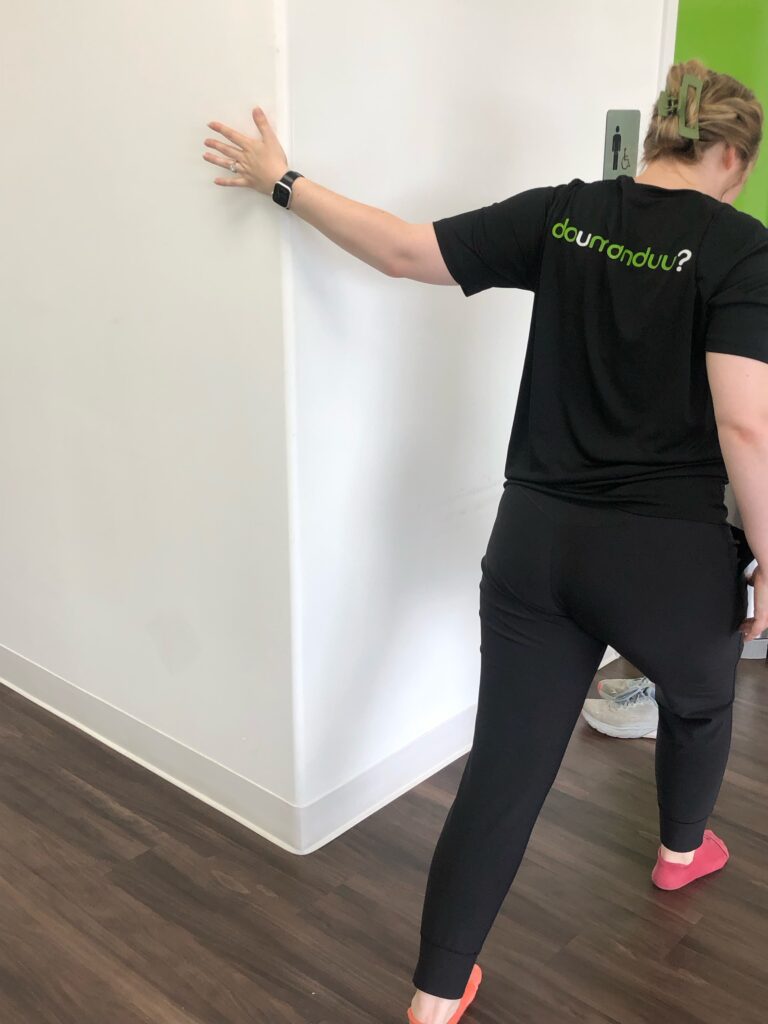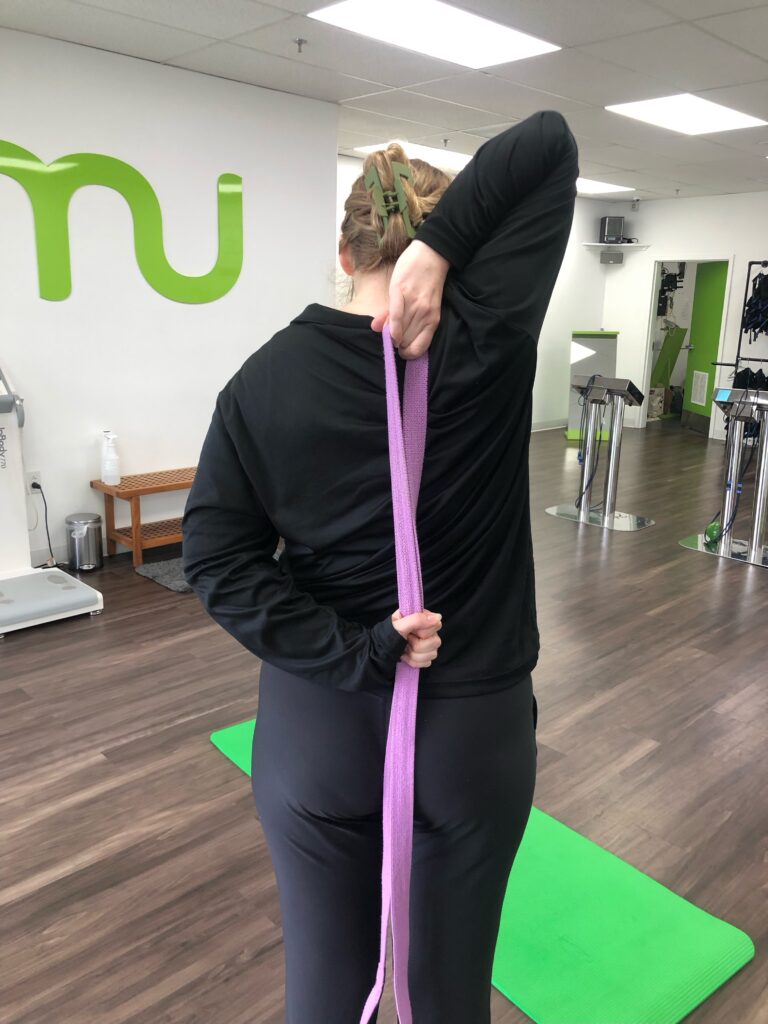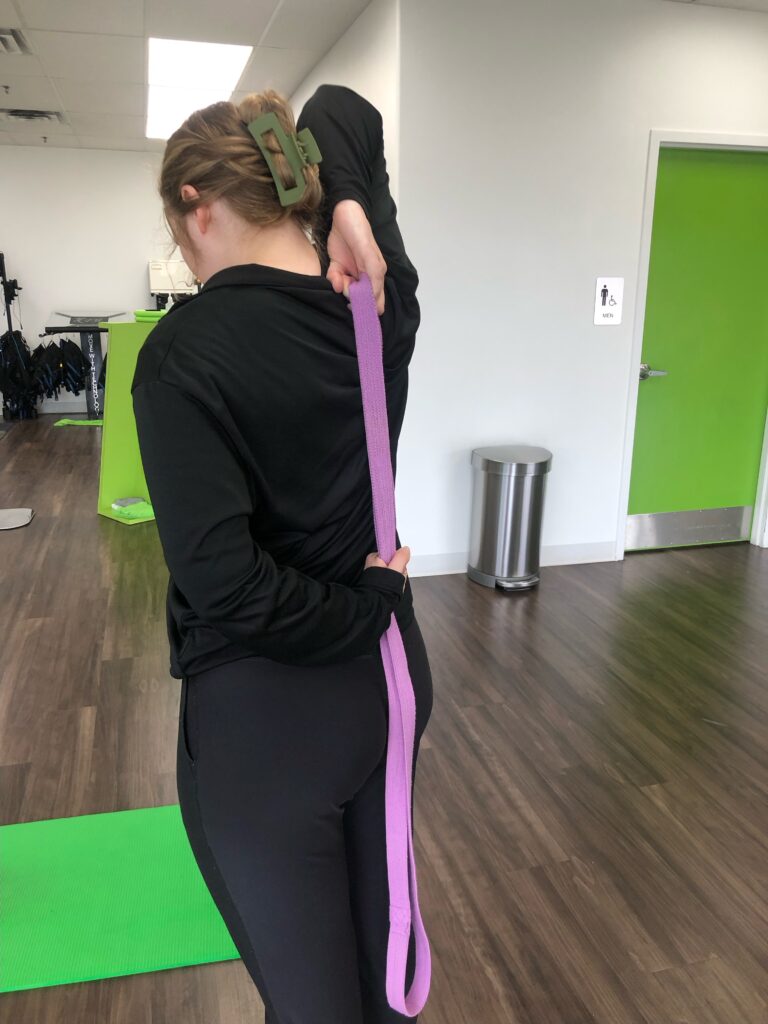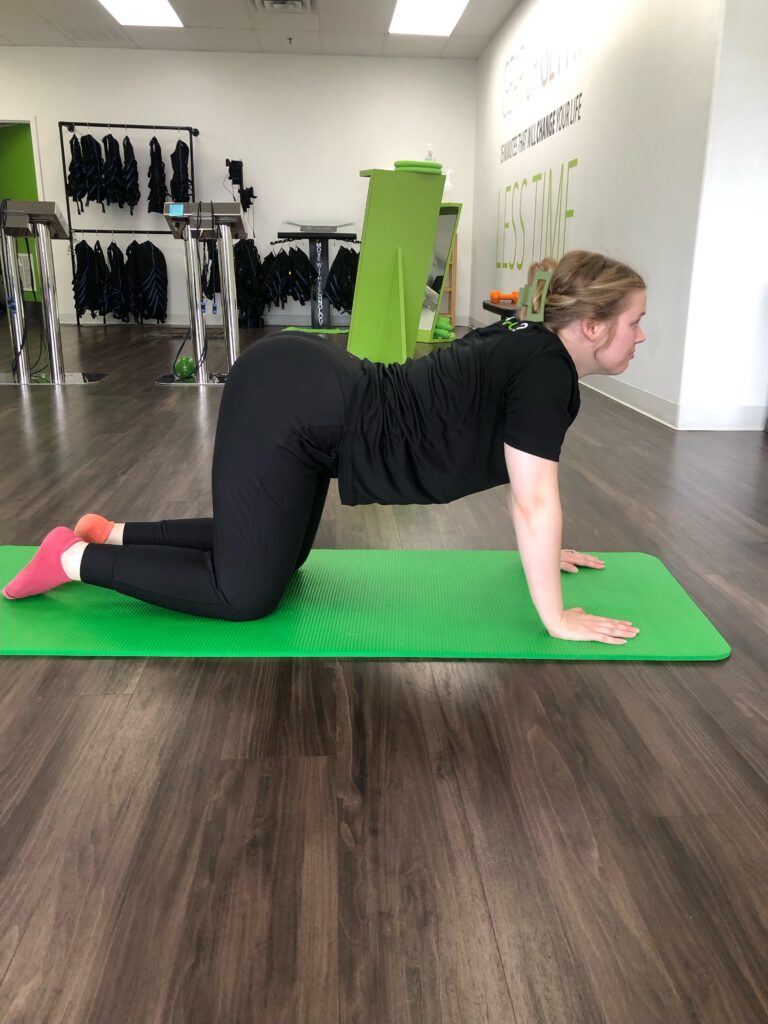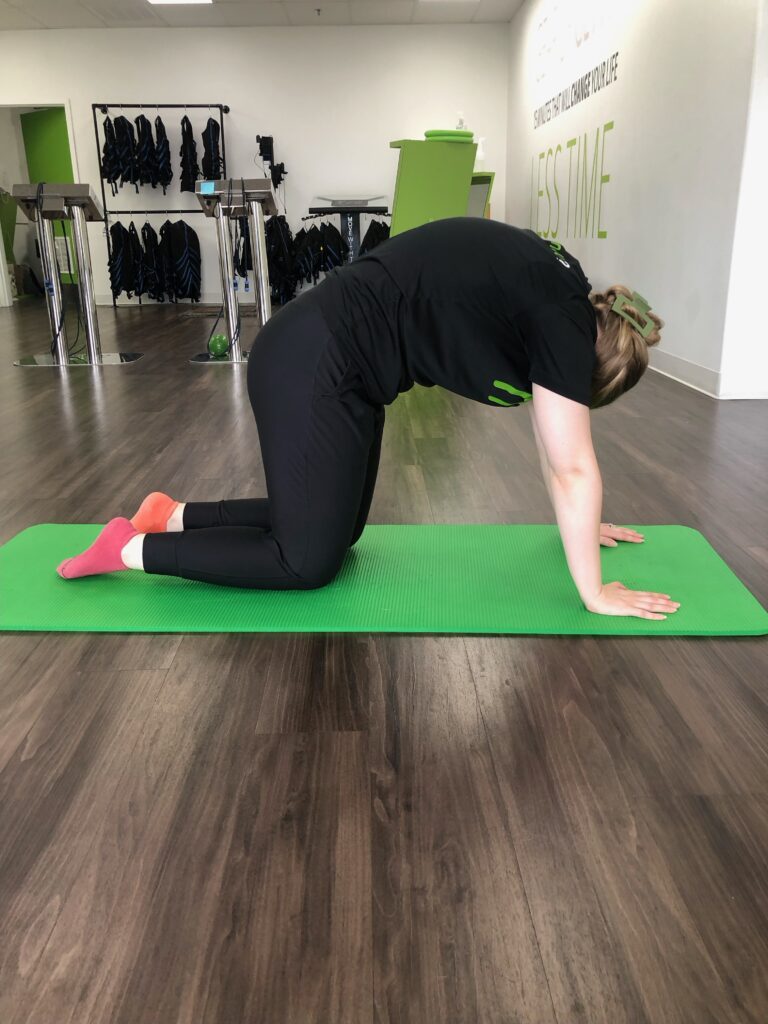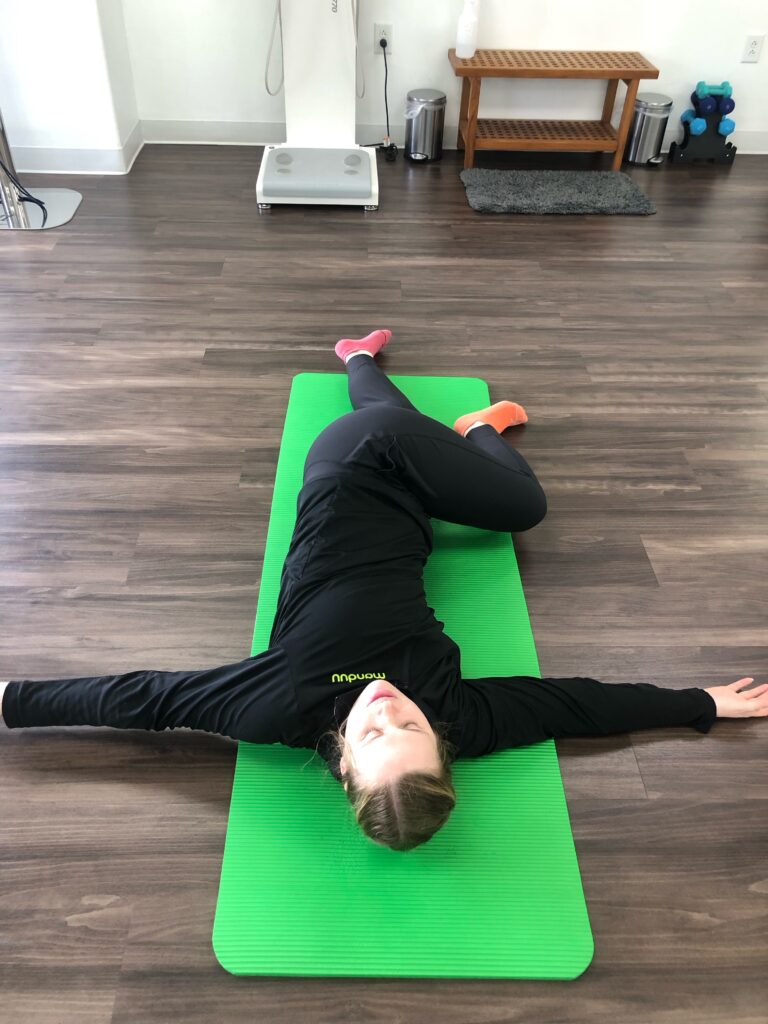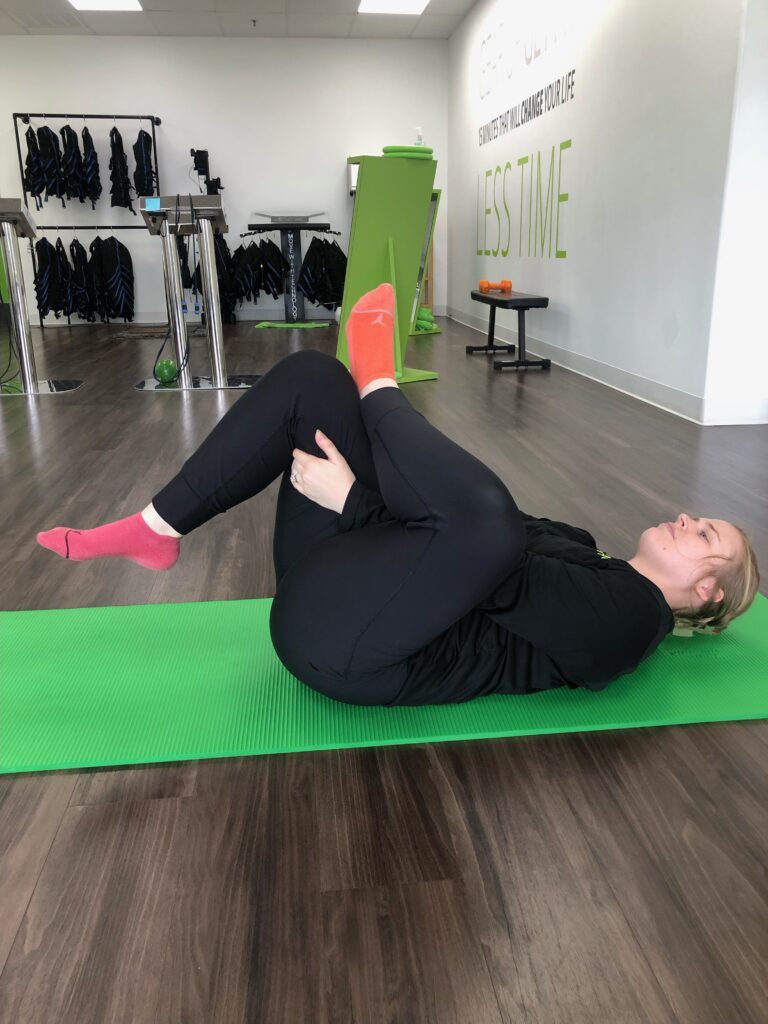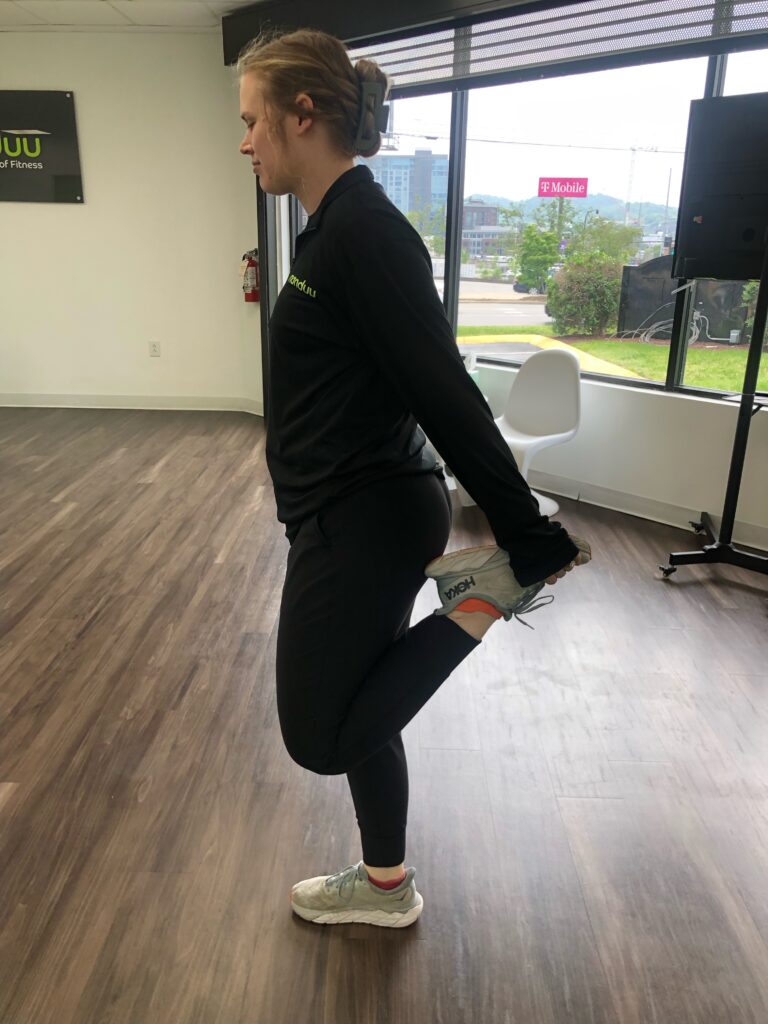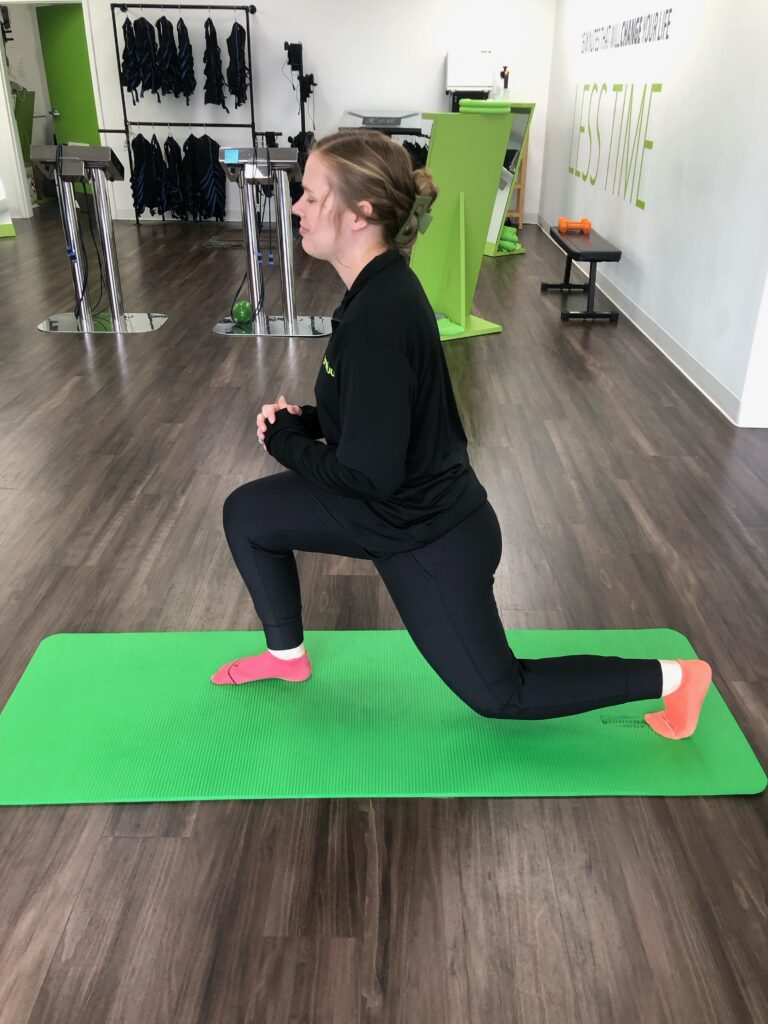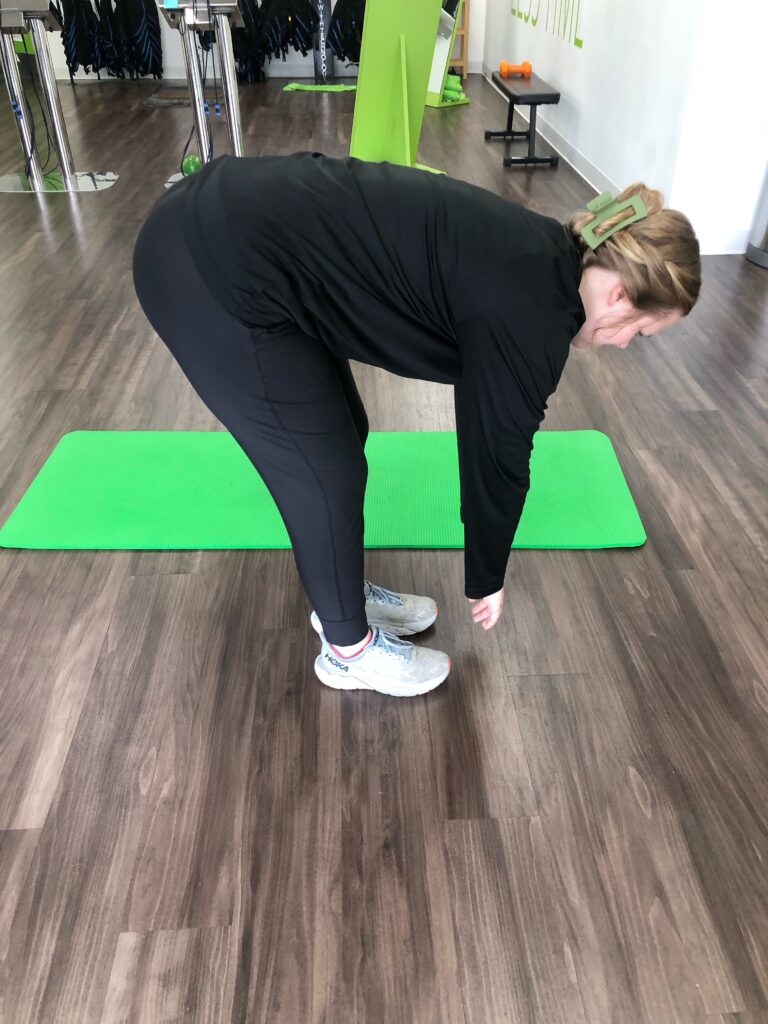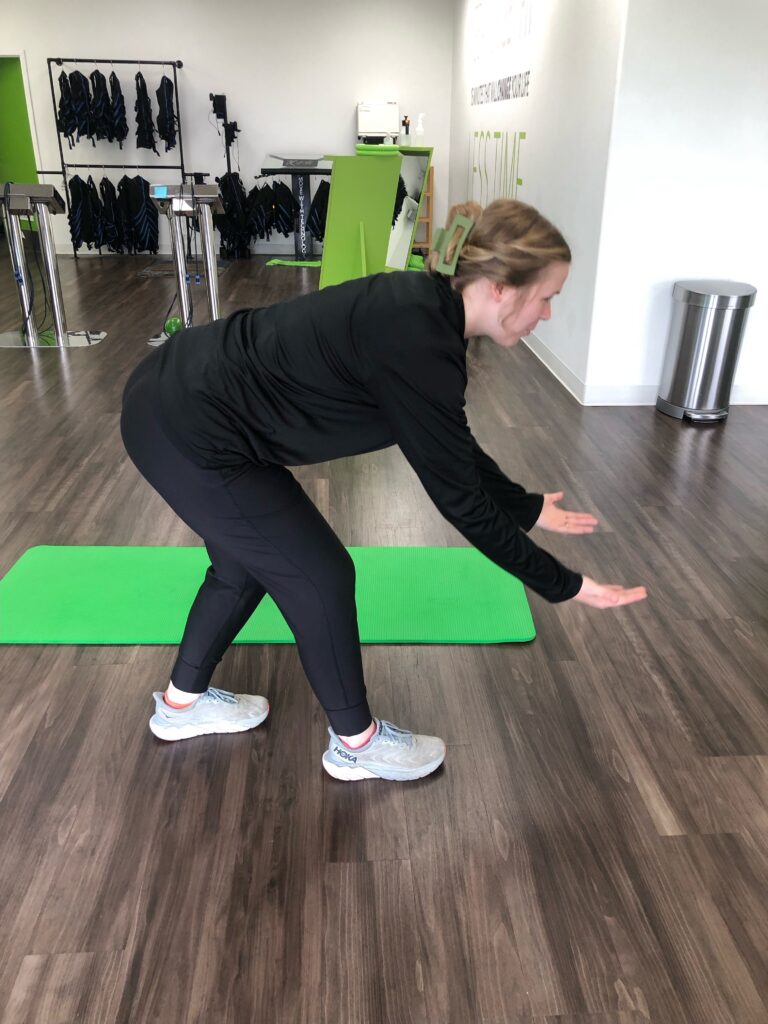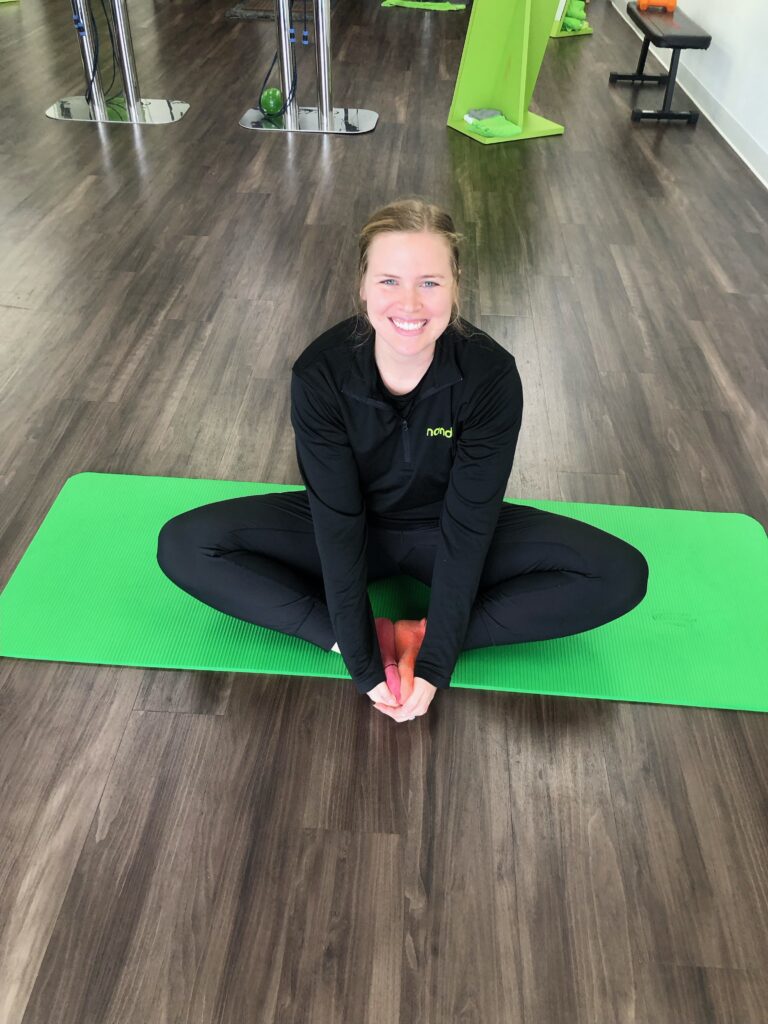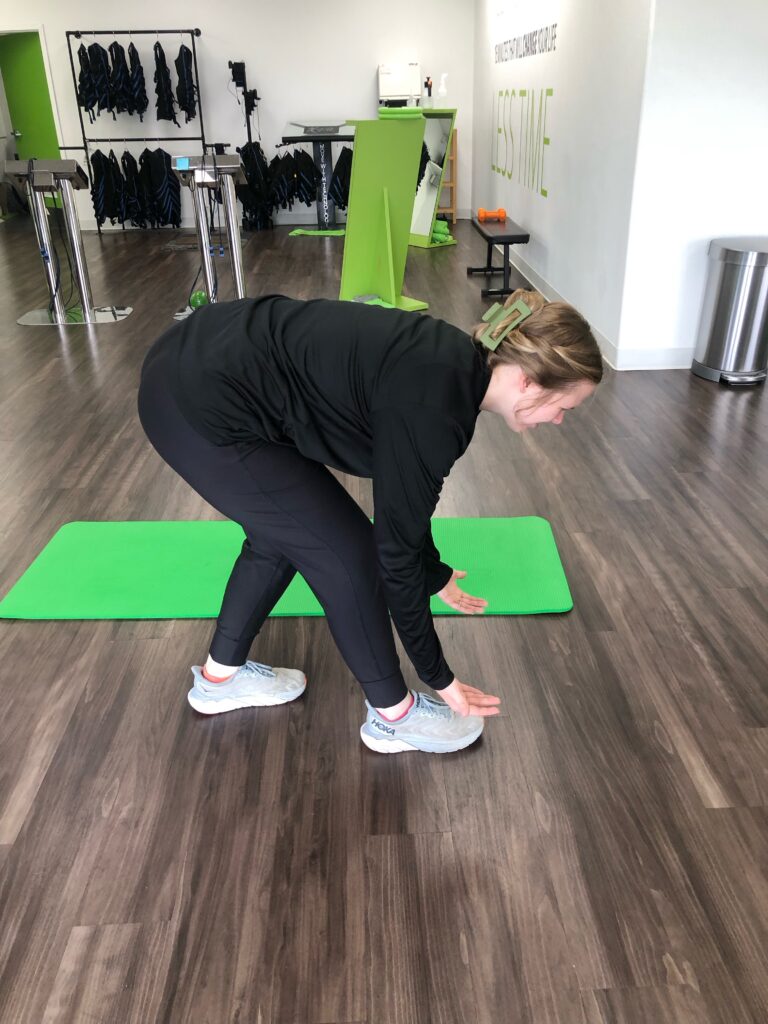DOMS: delayed onset muscle soreness
(aka, “muscle fever”)
WHAT IT IS:
-general muscle soreness caused by microscopic damage to muscle tissue
-aching feeling
-results from intense exercise, typically the result of novel stressor
-caused by eccentric movement
-eccentric movement recruits fewer motor neurons, thus force generated by movement is distributed over a smaller area of the muscle
-side effects of the repair process
-sets in 12-24 hours after exercise, with greatest pain experienced 24-72 hours after exercise
-generally a good sign!
WHAT IT IS NOT:
-lactate accumulation (even with DOMS pain, lactic acid returns to baseline 20-30 minutes post-exercise); eccentric movements produce less lactate
-sharp/highly localized pain, chronic pain
Pain, whether it’s DOMS or standard soreness, DOES NOT INDICATE “a great workout” or “gains” – rather it should be considered an indication to slow down/decrease weight/rest
*if you experience (excessive) pain during exercise, STOP exercising!
SYMPTOMS:
-swelling of effected limbs
-stiffness of associated joints + reduced ROM
-tenderness
-temporary decrease in strength
-increased CK levels
While severity is likely to increase with increased reps and increased weight, it has been found that more reps will have a greater impact on severity than increased weight will
There is no actual treatment for DOMS, nor is there a way to prevent it.
METHODS OF REDUCING SEVERITY BEFORE DOMS SET IN:
-gradually increase intensity & load (light weight until adapted)
-alternate intensity & load (alternate muscle groups)
-don’t try to power through pain when beginning a new modality
-proper warm-up & cool-down routine
-time/muscle adaptation
METHODS OF SYMPTOM/SORENESS REDUCTION (once DOMS have set in):
-ice
-increase circulation (massage; light exercise (walking, swimming, yoga))
-tenderpoint acupressure
-pain relief meds
-heat
-hydration
-compression garments
RECOVERY
3 – 7 days after initial onset, with loosening up and lessening of severity occurring in 3-4 days
You can attempt to reduce symptoms but that will only disguise pain and does not actually speed recovery. Although uncomfortable and often inconvenient, DOMS is a natural inflammatory process that the body needs to go through in order to properly adapt to new stimuli. It is the very starting mark of improved fitness and increased muscle mass. That said, it’s important to be cautious of how much you’re doing to mask symptoms and still allow for proper recovery. If you can ride it out with some easy movement, hydration, protein and some carbohydrate that’s your best bet (and what’s preferred by professionals).
Fun fact: It has been found that women are more susceptible to (more severe) DOMS than men, but that women recover from DOMS more quickly than men do 😊
Stretches to help you prepare for a workout and recover afterward!
w/ Cara (Franklin, TN studio manager) & Anna (Green Hills, TN studio manager)
Both pre & post workout stretching can help to lessen the severity of DOMS!
PRE-WORKOUT STRETCHING
Ballistic stretching: force past normal range of motion (movements like bouncing, leg swings, arm swings)
Dynamic: active stretching; flowing through movement (walking lunges, scoops, up -> downward dog, catcow, inchworms, jumping jacks, bodyweight squat, trunk twists);
POST WORKOUT STRETCHING
Static: no movement; minimum 30 second hold in each position @ full range of motion
*posture is especially important in static stretching, typically keeping chest up & out and back flat
*use walls, doorframes, bands
FOR ALL STRETCHES: once you start to feel the stretch where intended, hold in that position. Do not try to push past discomfort. If you feel stretching or tension somewhere other than is intended, reevaluate position/posture. If you still don’t feel that you can achieve stretch in the appropriate muscle group, it’s possible that specific stretch is simply not for you.
TYPES OF STRETCHES
Bicep:
1) Push right palm against wall, turn entire body outward (towards left) until you feel stretch across chest and into bicep. Hold for 30 seconds and switch sides. Repeat 3-4x on each side.
2) Wall = Standing next to the corner of a wall, raise whichever arm is closest to the wall and place it flat against it (elbow, forearm, palm in contact). In a staggered stance (right leg forward and left leg behind you) slowly lean forward past your shoulder, until you feel a stretch across your chest. Hold for 30 seconds and switch sides. Repeat 3-4x on each side.
Tricep:
1) Raise right hand over head, bend at elbow and drop hand behind head/neck/upper back. Bring left hand around back and grab right hand. Pull up with right hand and down with left hand. If you can’t reach, hold a towel in your right hand and allow it to hang down so that you can grasp it with your left hand. Hold for 30 seconds and switch arms. Repeat 3-4x on each side.
Chest:
1) Stretch arms behind your body and clasp hands together. Push chest forward and arch back. Hold 30 seconds. Repeat 3-4x times.
2) Wall = Standing next to the corner of a wall, raise whichever hand is closest to the wall and place your palm flat against it (elbow, forearm are not in contact with the wall). In a staggered stance (left leg forward and right leg behind you) start to lean forward past your shoulder, until you feel a stretch in your chest. Hold for 30 seconds and switch sides. Repeat 3-4x on each side.
Upper back:
1) Stretch arms out in front of body and clasp hands together. Turn palms outward, push palms forward and round upper back.
Lower back:
1) Child’s pose = from table-top position (on hands and knees, flat back) stretch arms out, keeping palms on the floor and dropping your head to prevent strain in your neck. Push butt back towards heels, keeping knees and shins glued to the ground and butt connected to calves. Hold 30 seconds, repeat 3-4x.
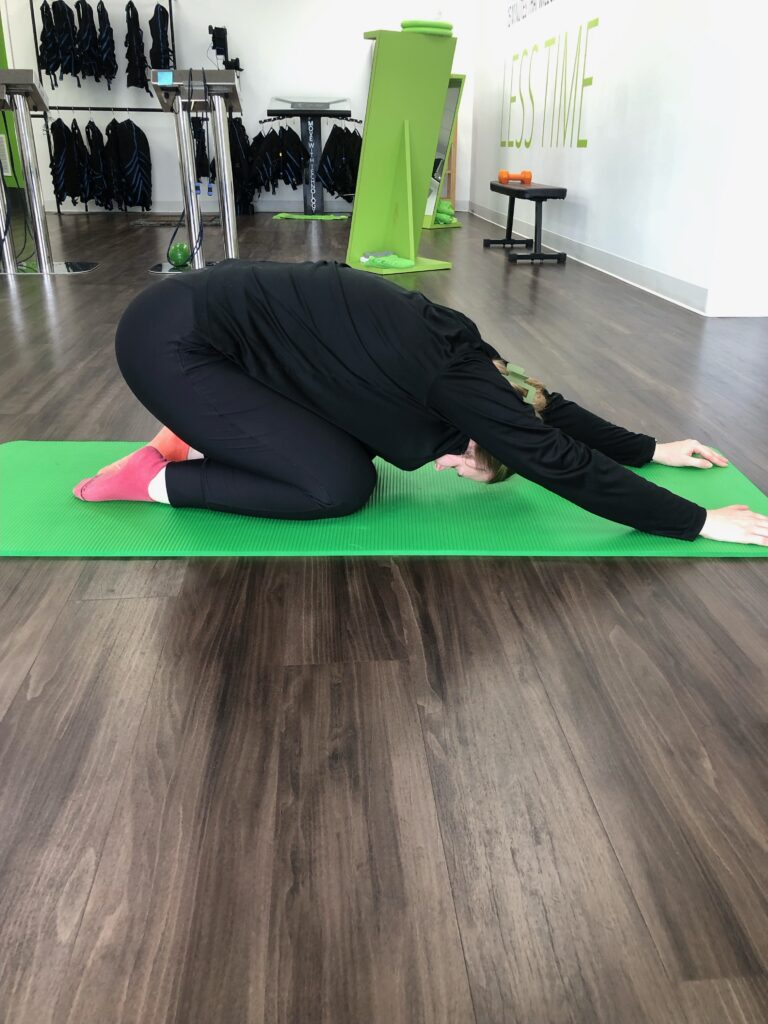
Abs:
1) Catcow = from table-top position (on hands and knees, flat back), drop chest towards ground and arch back while simultaneously bringing your gaze and head up towards the sky and taking a deep breath in. Hold for a 1-2 seconds. From this position, slowly round out your upper back, pulling bellybutton in towards your spine, lowering gaze and head, and pushing your breath out. Complete 10 reps. Repeat 3-4x.
2) Scorpion = from prone position (laying down on your belly, legs flat out behind you), place palms on the ground near your waist, shoulder width apart. Slowly begin to lift chest by pushing off the ground and arching the back, leaving a slight bend at the elbows. Hold for 30 seconds, repeat 3-4x.
Glutes:
1) Pigeon pose = sit on floor with legs out in front of you. Bend right leg to bring shin parallel to your body (or, as close to parallel as is comfortable) and extend left leg straight behind you (knee is in contact with the floor). Hinge forward and bring chest down towards your right leg, supporting yourself with your hands. If comfortable, continue to bring your chest down and drop to your elbows with forearms flat on the ground. Hold for 30 seconds, switch legs. Repeat 3-4x for each leg.
2) Figure 4 = lay on your back with legs outstretched. Bend your left knee & keep foot flat on the floor. Lift your right leg and place your foot or ankle on your left thigh (right above knee). Bring your right arm through legs and clasp hands behind your left hamstring. Gently pull left leg towards your body. This will stretch your RIGHT glutes and hamstring. Hold 30 seconds and switch legs. Repeat 3-4x for each leg.
3) Side lying = lay on your back with legs outstretched. With both arms straight out on either side of your body, take your left leg, bent at the knee, and bring it across your body, over your right leg. Try to keep your right leg straight, and keep both your right leg and your shoulders and back in contact with the ground. Hold for 30 seconds and switch legs. Repeat 3-4x for each leg.
Quads:
1) Standing =Using a wall for stability, if necessary, bend right knee and bring heel to right glute. Grasp foot and pull further in towards glute. Hold 30 seconds and switch legs. Repeat 3-4x for each leg.
2) Kneeling stretch = Kneel on your left knee. Keep your lower back flat and your chest up. Bend forward by hinging forward (bring your chest down towards your left quad). Hold 30 seconds and switch legs. Repeat 3-4x for each leg.
Hamstrings:
1) Standing toe touch = Stand up straight with feet together. Hinge at the hips and allow both hands to hang down towards your toes. Hold on to wherever you can reach comfortably – the backs of your knees, calves, ankles, tops of your feet or toes. Increase tension and stretch by gently pulling. Hold 30 seconds, repeat 3-4x.
1a) Seated toe touch = Sit down with legs outstretched and feet together.
Reach out towards toes, grabbing whatever feels comfortable and gently
pull. Hold 30 seconds, repeat 3-4x.
2) Scoops = stand in a “walking stance” (with your right leg out in front of you, straighten your leg with your heel on the floor and toes pointed up; left leg has a slight bend in the knee, in line with your body). Hinge at the hips, extending both arms down, one on either side of your right leg, palms up. “Scoop” upwards towards your head as you take a full step, switching the position of your legs again, as if you were walking normally. Take 10 full steps. Repeat 3-4x.
Hip Flexors:
1) Pigeon pose (described above for glutes) and kneeling stretch (described above for quads) are great stretches for hip flexors!
2) Butterfly stretch = sit on the floor, back straight, pressing the bottoms of your feet together. Let your knees fall outward to a comfortable point. You can apply light pressure to your knees if you desire a deeper stretch but there’s NO need to push your knees further down if you feel comfortable. Hold 30 seconds (don’t pump your legs), repeat 3-4x.
3) Low lunge = get into a lunge position (right leg far forward, knee bent; with left leg behind you, with knee in contact with the ground). Straighten your left leg as much as possible. For a deeper flexor stretch (and some oblique love), place your right palm on the ground next to your foot, raise your left arm over your head and lean towards the right. Hold 30 seconds, switch sides. Repeat 3-4x on each side.
Calves:
1) Raises = You can do this with both legs at once or one at a time (use a wall for balance if necessary). Slowly raise up onto your toes, pause for a moment and slowly lower back onto your heels. Alternate between legs if doing one at a time; complete 10 reps, rest and repeat 3-4x.
2) Eccentric raises = Stand on a block or step (anything slightly elevated off the floor) and use a wall for balance. Allow your heels to hang off the surface, stretching the calves. Slowly raise onto your toes, pause for a moment and slowly lower down past the surface. Complete 10 reps, rest and repeat 3-4x.
3) Standing = Place both palms on a wall (or hold onto the back of a chair). Extend your right leg back and straighten it (keeping your foot flat on the floor). Bend your left knee and push into the wall until you feel a stretch in your right calf. Hold 30 seconds, then switch legs. Repeat 3-4x on each side.
Myofascial release is a type of treatment or therapy that is important to the release of tension in muscle. It can help to ease pain, discomfort, tightness, inflammation and decreased range of motion. A foam roller (or tennis or lacrosse ball) can mimic this kind of treatment if done properly and appropriately.
Foam rolling:
Hamstrings
Glutes/piriformis
Low back
Upper back
IT
Quads
Thanks for joining!
Watch all Manduu For Life educational videos HERE!
